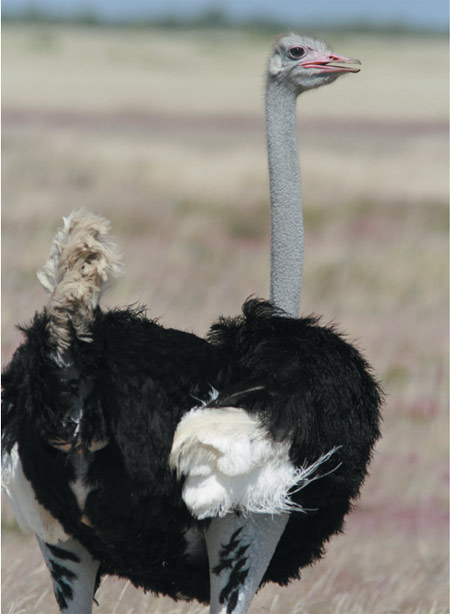Theory of Flightless Birds Shot Down

Ostriches, emus, kiwis and other winged non-flyers might seem to be birds of a feather, sharing similar evolutionary origins, but the story could turn out to be much weirder, with perhaps numerous flying ancestors. This group of birds, called ratites, has been viewed by biologists as part of a larger group (paleognaths) of mostly extinct birds that are key to understanding the early evolution of birds. All living ratites are found in the Southern Hemisphere and share features associated with flightlessness, such as small or absent keels on their breastbones; smaller, simpler and fewer wing bones; bigger leg bones; and structures in their feathers that don't help with aerodynamics. So for these reasons and others, many scientists previously figured the ratites, a group that also includes rheas and cassowaries, all shared a common ancestor that was flightless. However, a new analysis shows they do not share this single hypothetical flightless ancestor. Rather they probably evolved from more than one different airborne ancestor. Ostriches are special The research, led by John Harshman of the Field Museum of Natural History in Chicago, Edward L. Braun of the University of Florida and Michael J. Braun of the Smithsonian's National Museum of Natural History, was based on sequencing genetic material sampled from the tissues of many different bird species and using the gene sequences to determine how the birds relate to one another. Nearly all of the ratites, except for ostriches, which the analysis revealed as a class unto themselves, are actually more closely related to tinamous (a chubby, ground-dwelling bird with a stubby tail, that nonetheless can fly and lives in Central and South American) than they are to ostriches, says UF zoologist Edward L. Braun. The analysis also placed tinamous in a sub-group that includes rheas, cassowaries, emus and kiwis but excludes ostriches. "We think the most likely hypothesis is that the tinamous, rheas, cassowaries, emus, and kiwis had an ancestor that could fly, and that flight was lost at least three times (once in ostriches, once in rheas, and once in the emu-cassowary-kiwi group)," Braun said.
Julia Clarke, a paleontologist at North Carolina State University, was not involved in the new research, and said the results are surprising, the analyses are well done and the dataset used for them is the largest one available. "It is unquestionable that any future analysis will need to address this dataset," she said, "but the results are in conflict with nearly every previous hypothesis of relationships within paleognath birds."
New idea takes flight The result also undermines continental drift as the explanation for how flightless birds became so far-flung — ostriches today live in Africa; rheas in South American; emus and cassowaries in Australia and New Guinea; kiwis and moas (the latter now extinct) in New Zealand; and elephant birds (also now extinct) in Madagascar. Some zoologists had thought the birds' distribution reflected the order in which the continents broke away from the early super-continent of Gondwana. But it looks like there is a much simpler explanation for the distribution of ratites' ancestors, once Gondwana started to break up 167 million years ago. They flew. "Our idea provides another explanation for the distribution of ratites — it becomes reasonable to postulate that they flew to their new homes and only lost flight after dispersing," Braun told LiveScience.
Clarke said that if the new results are confirmed with a new set of genes or other combinations of data, "there could be profound implications for our understanding of major trends in bird evolution, such as patterns and potential explanations of flightlessness." The finding is also exciting from a developmental standpoint, Braun said, given how similar most ratites look. The ratites apparently all arrived at similar body shapes through different evolutionary routes, a concept called convergence (for example, birds, bats, insects and pterosaurs all have or had wings, but they are not all closely related). "This raises an interesting question — what genetic mechanisms lead to these similarities, and can we identify them by looking at how ratite chicks grow in the egg," Braun said. The research, funded by the National Science Foundation, is detailed this week in the online edition of the journal Proceedings of the National Academy of Sciences.
- Video: Extraordinary Birds
- Gallery: Rare and Exotic Birds
- Birds of Prey: Spot Today's Dinosaurs
Sign up for the Live Science daily newsletter now
Get the world’s most fascinating discoveries delivered straight to your inbox.
Robin Lloyd was a senior editor at Space.com and Live Science from 2007 to 2009. She holds a B.A. degree in sociology from Smith College and a Ph.D. and M.A. degree in sociology from the University of California at Santa Barbara. She is currently a freelance science writer based in New York City and a contributing editor at Scientific American, as well as an adjunct professor at New York University's Science, Health and Environmental Reporting Program.










